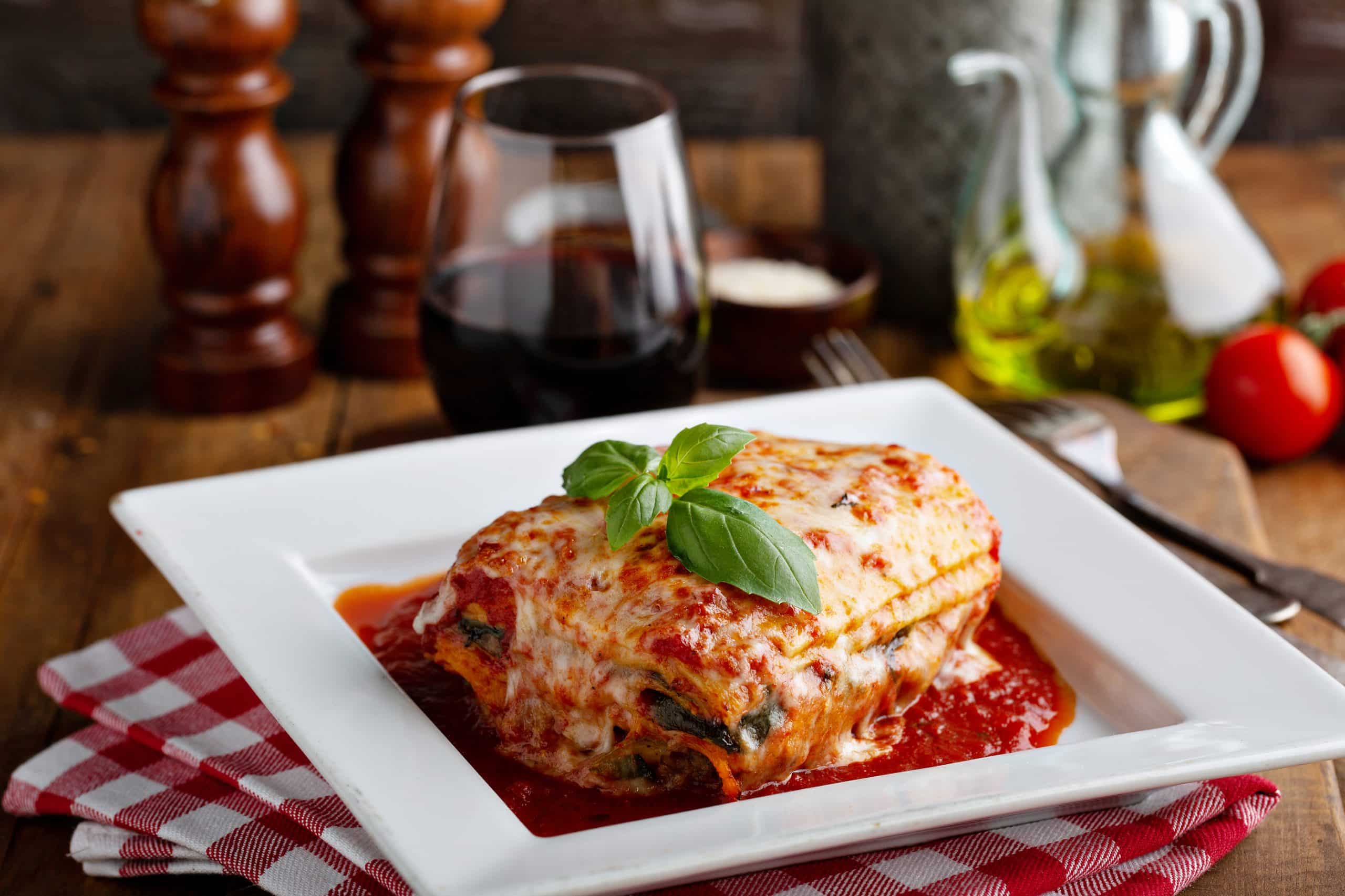Can You Prepare a Gourmet Vegetarian Lasagna with Roasted Vegetables?

You may be wondering, is it even possible to prepare a gourmet vegetarian lasagna? How would the absence of meat affect the flavor? With the right ingredients, technique, and a whole lot of love, you’ll be surprised at the culinary wonder you can create. The secret lies in the sumptuous layers of perfectly cooked noodles, hearty roasted vegetables, smooth ricotta cheese, and a vibrant sauce. It’s a feast for the senses that even non-vegetarians can’t resist. In this guide, we’ll walk you through the process of creating this mouth-watering dish.
Exploring the Layers: Choosing Your Ingredients
The first thing that comes to mind when one thinks of lasagna is the layers. Each layer contributes to the overall flavor and texture of the dish. In a vegetarian lasagna, the meat is replaced by a combination of vegetables. But, you don’t just add any vegetables; you need to select the right ones that will create a harmonious blend of flavors.
A lire également : What’s the Key to a Perfectly Crisp and Flavorful Spinach and Feta Pie?
Zucchini and spinach are excellent choices for starters. When roasted, zucchini develops a deep flavor that contrasts well with the creaminess of the cheese. On the other hand, spinach adds a touch of freshness and a slightly bitter undertone that balances the richness of the cheese and sauce.
For the cheese, ricotta is a must-have. Its mild and slightly sweet taste complements the bold flavors of the roasted vegetables. Additionally, its creamy texture contributes to the lasagna’s overall lusciousness. Don’t forget the mozzarella and Parmesan to add a hint of sharpness and a beautiful golden top.
A lire également : What’s the Secret to Making the Perfect Fluffy and Buttery Brioche?
When it comes to the noodles, go for the no-boil variety. They’re convenient to use and they absorb the sauce better, resulting in a more flavorful dish overall.
Preparing the Roasted Vegetables
Roasting the vegetables is a crucial step in this recipe. It brings out the vegetables’ natural sweetness and gives them a slight smoky flavor that adds depth to the lasagna.
To start, preheat your oven to 425°F. Cut the zucchini into thin slices and toss them in a bowl with a bit of olive oil, salt, and pepper. Arrange the slices in a single layer on a baking sheet and roast them for about 20 minutes until they’re lightly browned and tender.
While the zucchini is roasting, you can sauté the spinach. Heat a little bit of olive oil in a pan over medium heat. Add the spinach and cook it until it wilts. This should take about 2-3 minutes.
Assembling the Lasagna
Now comes the fun part – assembling the lasagna. Before you start, preheat your oven to 375°F.
First, spread a thin layer of your chosen sauce at the bottom of a baking dish. This helps prevent the noodles from sticking. For the next layer, arrange the no-boil noodles over the sauce. Then, spread a generous amount of ricotta cheese over the noodles.
Next, distribute a portion of the roasted zucchini and wilted spinach over the ricotta. Repeat the layers until you’ve used up all the ingredients, ending with a layer of noodles.
Lastly, top the final layer of noodles with more sauce, and sprinkle a combination of mozzarella and Parmesan cheese all over the top.
Baking the Lasagna
After assembling the lasagna, it’s time to bake it. Cover the baking dish with aluminum foil and place it in the preheated oven. Bake for about 45 minutes. This allows the flavors to meld together and the cheese to melt into a gooey, golden layer.
Uncover the lasagna and bake it for another 15 minutes or until the cheese on top is bubbling and lightly browned. Once done, let it rest for about 10 minutes before serving. This allows the lasagna to set and makes it easier to cut into servings.
How Long Can You Store the Lasagna?
If you’ve made more lasagna than you can consume in one sitting, don’t worry. You can store leftover lasagna in the refrigerator for up to 5 days. Make sure to cover it tightly with foil or transfer it to an airtight container to prevent it from drying out.
Alternatively, you can freeze the lasagna. Portion the leftovers into meal-sized servings and wrap each one tightly in plastic wrap. Then, place the wrapped servings in a freezer-safe bag or container. Properly stored, the lasagna can last in the freezer for up to 3 months.
When you’re ready to eat, just reheat the lasagna in the oven until it’s warmed through and the cheese is bubbly.
The Secret Sauce: Preparing the Perfect Tomato Base
The heart and soul of any lasagna, vegetarian or not, lies in its tomato sauce. A perfectly balanced sauce can elevate your vegetable lasagna from being just good to being absolutely divine!
To start, you’ll need ripe, juicy tomatoes. If fresh ones aren’t available, high-quality canned tomatoes will do just fine. In a large pot, heat some olive oil over medium flame. Add minced garlic and cook until it’s fragrant. Stir in chopped onions and cook until they’re soft and translucent.
Add the tomatoes to the pot along with a pinch of salt and pepper. If you want to add a little zest to your sauce, include a dash of red wine vinegar. Let the mixture simmer for about 45 minutes or until it reaches a thick, saucy consistency.
To add complexity to the flavors, you can incorporate a medley of herbs – fresh or dried. Basil, oregano, thyme, and rosemary are all great options. Remember to adjust the salt and pepper to your taste before turning off the heat.
Adding More Flavor: Incorporating Other Roasted Vegetables
While zucchini and spinach are the primary vegetables in this vegetarian lasagna recipe, there’s room for more. Roasted vegetables like bell peppers and butternut squash can add more depth to the flavor profile of your lasagna.
Bell peppers can add a nice crunch and a touch of sweetness to your lasagna. For the butternut squash, its natural sweetness becomes more pronounced when roasted, nicely contrasting the tanginess of the marinara sauce.
Simply slice these roasted vegetables into thin strips and toss them in olive oil, salt, and pepper. Roast them in the oven at the same temperature and time as the zucchini.
Wrapping it Up: Concluding Thoughts and Tips
You have now been thoroughly guided on how to prepare a gourmet vegetarian lasagna with roasted vegetables. Every step, from choosing your ingredients, roasting your vegetables, to layering your lasagna has been meticulously explained to ensure you get the best results.
Always remember that good quality ingredients are key to a great vegetarian lasagna. Fresh, premium vegetables will always yield the best roasted veggies. High-quality cheeses like ricotta, mozzarella, and Parmesan will give your lasagna a gourmet feel and taste.
Don’t fret about leftovers. This lasagna recipe stores well, either in the refrigerator for a few days or in the freezer for up to three months. Just make sure you have it properly covered or sealed in your baking dish to maintain its freshness and prevent it from drying out.
Lastly, don’t forget to savor every bite of your homemade gourmet vegetarian lasagna. After all, the time and effort you put into making this culinary delight are part of the joy of cooking. Now, with your newfound knowledge and the perfect lasagna recipe, you can confidently answer, "Yes, I can prepare a gourmet vegetarian lasagna with roasted vegetables!".
Time to fire up that oven and start cooking. Enjoy your culinary adventure!
